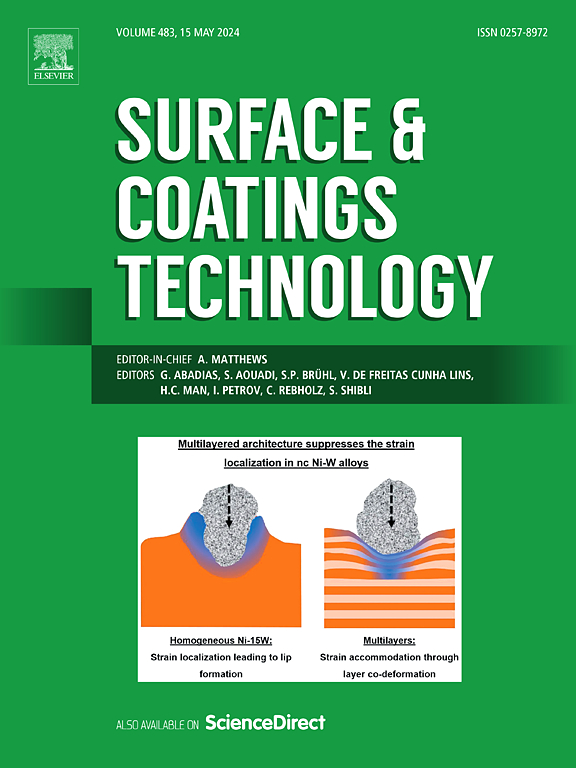Convergence during feedback controlled reactive magnetron sputtering: Mechanisms and classification
IF 5.3
2区 材料科学
Q1 MATERIALS SCIENCE, COATINGS & FILMS
引用次数: 0
Abstract
During feedback control of reactive magnetron sputtering, process parameters often exhibit a complex time-dependent behavior. This behavior hinders process stabilization and can lead to a modification of the desired film properties. This study investigates the processes behind this behavior by performing time-resolved measurements during reactive sputtering of aluminum in argon/oxygen mixtures. Two distinct groups of physical processes were identified. The first group exhibits a relatively fast time-dependent behavior, leading to process stabilization within 5 to 8 min. This group includes processes related to reactive gas introduction, its interaction with deposited material, and the feedback loop characteristics. The second group causes a continuous drift of the process for more than 45 min, primarily due to oxide deposition on the chamber walls and target erosion. These two groups have a different impact on the process curves known as hysteresis curves. For the first group, the impact is minimal while for the second group the hysteresis curve becomes distorted, potentially leading to misinterpretation or incorrect selection of deposition conditions. The utilization of the difference between the discharge voltage and floating potential as the feedback input signal eliminates the impact of oxide deposition and mitigates this problem.
求助全文
约1分钟内获得全文
求助全文
来源期刊

Surface & Coatings Technology
工程技术-材料科学:膜
CiteScore
10.00
自引率
11.10%
发文量
921
审稿时长
19 days
期刊介绍:
Surface and Coatings Technology is an international archival journal publishing scientific papers on significant developments in surface and interface engineering to modify and improve the surface properties of materials for protection in demanding contact conditions or aggressive environments, or for enhanced functional performance. Contributions range from original scientific articles concerned with fundamental and applied aspects of research or direct applications of metallic, inorganic, organic and composite coatings, to invited reviews of current technology in specific areas. Papers submitted to this journal are expected to be in line with the following aspects in processes, and properties/performance:
A. Processes: Physical and chemical vapour deposition techniques, thermal and plasma spraying, surface modification by directed energy techniques such as ion, electron and laser beams, thermo-chemical treatment, wet chemical and electrochemical processes such as plating, sol-gel coating, anodization, plasma electrolytic oxidation, etc., but excluding painting.
B. Properties/performance: friction performance, wear resistance (e.g., abrasion, erosion, fretting, etc), corrosion and oxidation resistance, thermal protection, diffusion resistance, hydrophilicity/hydrophobicity, and properties relevant to smart materials behaviour and enhanced multifunctional performance for environmental, energy and medical applications, but excluding device aspects.
 求助内容:
求助内容: 应助结果提醒方式:
应助结果提醒方式:


